What I Buy and Why
Former Ballet Dancer Clara Xing on Her Eclectic Tastes in Collecting, From Ancient Chinese Artifacts to Contemporary Works
Some of her collection is currently on display at the Metropolitan Museum of Art, New York.
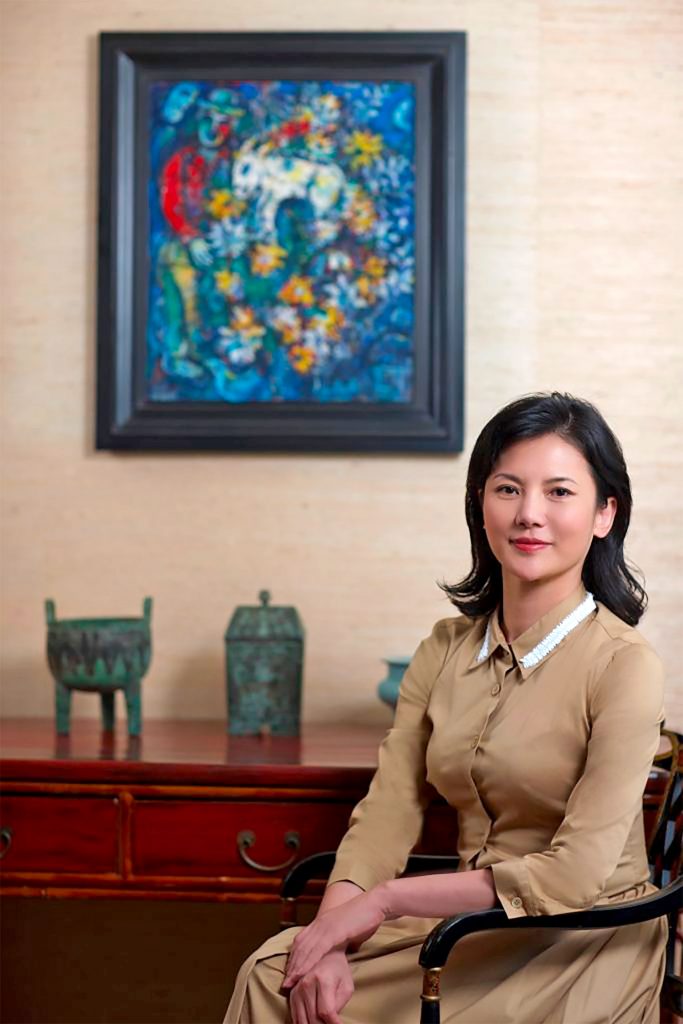
Some of her collection is currently on display at the Metropolitan Museum of Art, New York.

Cathy Fan

Clara Xing embodies a multi-faceted persona, having excelled as a former classical ballet artist, television anchor, and film director. Alongside these achievements, she embraces the roles of devoted mother and passionate art collector, currently serving on the boards of the American Friends of Shanghai Museum and the Smithsonian’s National Museum of Asian Art.
From an early age, her ballet experiences immersed her in the world of art. Despite the apparent dichotomy between the performing arts and collecting, she perceives them as interconnected. On stage, she was the performer who captivated the audience’s gaze, whereas with artworks, she assumes the role of the observer, allowing the pieces to become the “performers.”
Storytelling is integral to Xing’s collection. Each art piece, in her discerning eyes, silently narrates a tale of a dynasty’s history, culture, and the collectors who have acquired it. From its minutiae to the grand scope of history, she delves into the world of ancient beauty. Her background in film and television helps her hone her interest in interpreting visual imagery. Ancient artifacts are her gateway to unraveling the timelessness of beauty and its significance in human history.
Her collection is as diverse and eclectic as her experiences, ranging from dynastic Chinese vessels to contemporary Chinese ink art (Zheng Chongbin, Fung Ming Chip), as well as modern Western masterpieces by Marc Chagall and Andrew Wyeth. We caught up with her for a glimpse into her wide-ranging tastes.
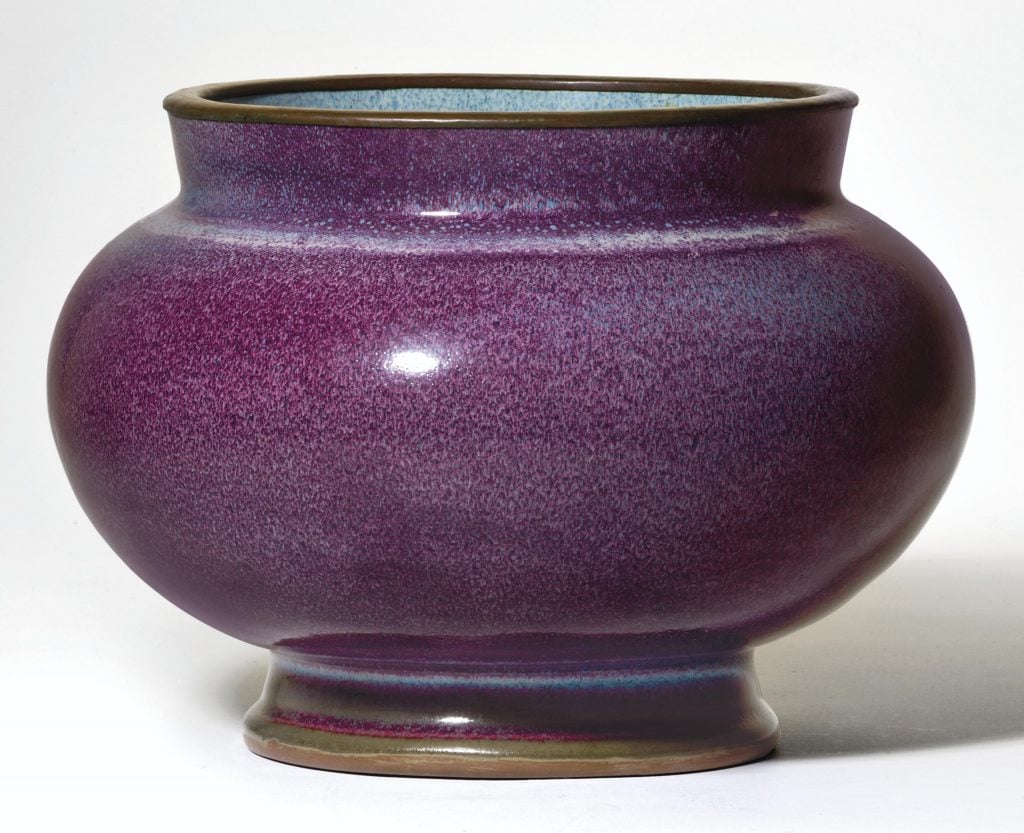
A numbered Jun jardinière in a purplish glaze, Yuan-Ming dynasty (14th–15th century). Courtesy of Clara Xing.
What was your first purchase?
The first time I got involved in art collecting was when I entered an auction house eight years ago and there was an exhibition preview. That was the first time I touched Song dynasty porcelain. I will never forget the shock I had that day, that the ancient Chinese people from a thousand years ago had created something so elegant. I later learned that it came from a rare batch of high-quality Song porcelain that was in the collection of the Japanese collector Linyushanren. I remember that when I held the porcelain in my hands, I felt for the first time the unique aura conveyed by the objects, which is actually what we call Song Yi (“the spirit of Song”). From today’s point of view, the Song dynasty was a very avant-garde historical era. Western abstraction and minimalist aesthetics already appeared in China during the Song dynasty, but conceptually different from Western minimalism, which is a process of subtraction, while Song dynasty minimalism is subtraction made into addition. It was with that one chance encounter with Song porcelain that collecting entered my life. I was also fortunate enough to collect my first porcelain piece, a numbered Jun jardinière in a purplish glaze.
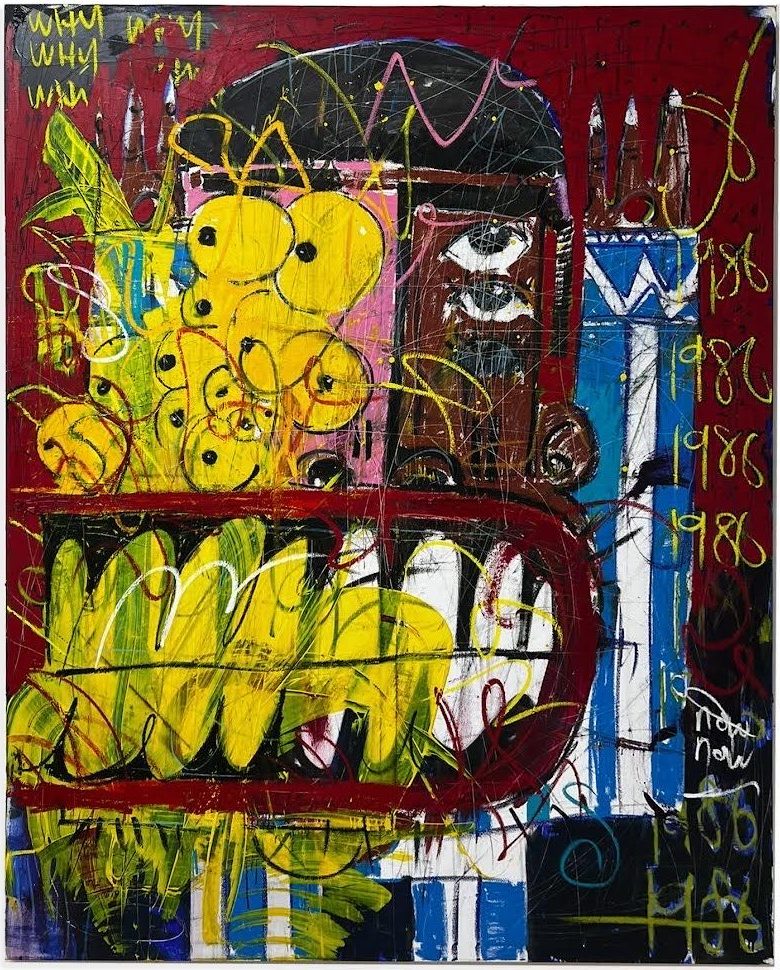
Móyòsóré Martins, Nothing to Lose (2022). Courtesy of Clara Xing.
What was your most recent purchase?
My most recent purchase is an abstract work by Brooklyn-based mixed-media artist Móyòsóré Martins, who was born in 1986 and raised in Lagos, Nigeria. He is also the first Western contemporary artist in my collection.
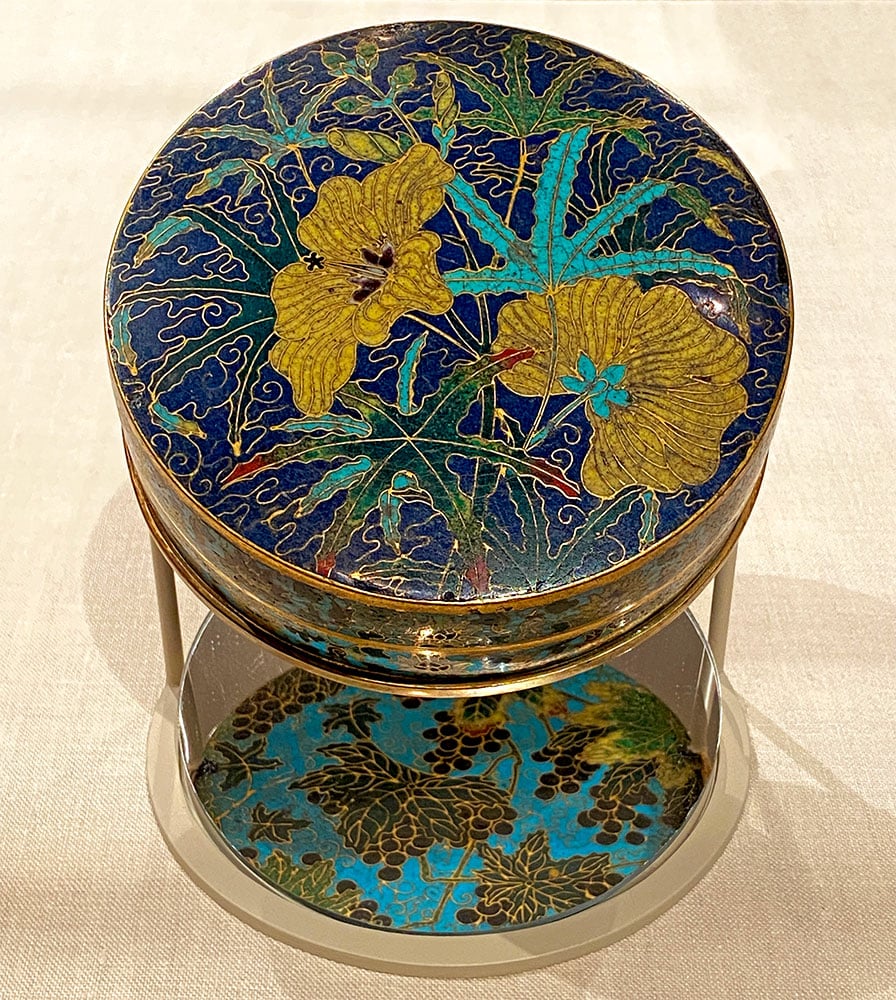
Cloisonné enamel box with hibiscus and grapes, Ming dynasty (1368–1644). Courtesy of Clara Xing.
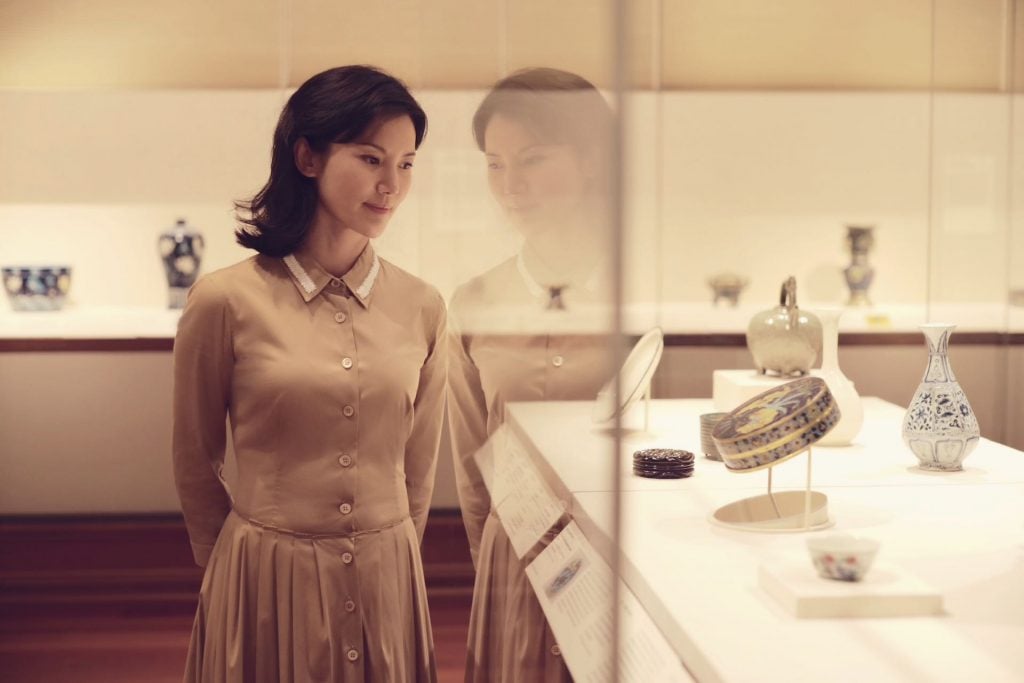
Clara Xing admiring the cloisonné box at the Metropolitan Museum of Art, New York. Courtesy of Clara Xing.
Tell us about a favorite work in your collection.
The cloisonné enamel-covered box with hibiscus and grapes is currently on display at the Metropolitan Museum of Art. It is my pride and joy, as there are very few of its kind and of similar quality in existence.
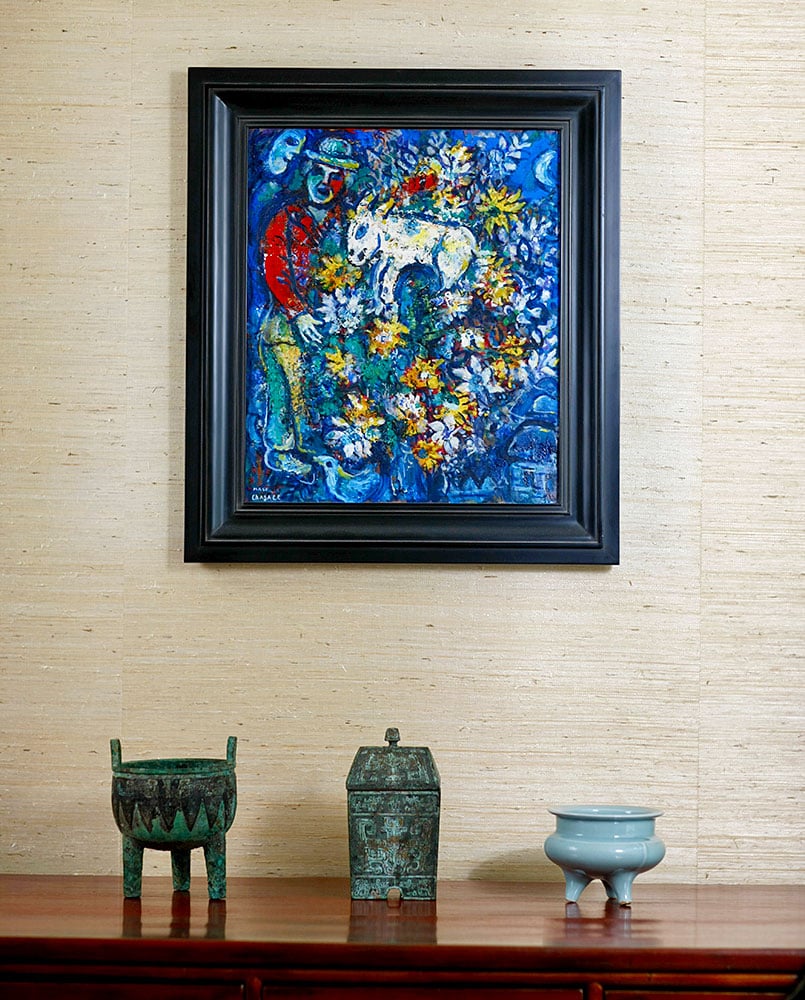
Marc Chagall, Fleurs or Le bouquet champêtre (1965). Courtesy of Clara Xing.
Another favorite is my Marc Chagall oil painting, Fleurs or Le bouquet champêtre (1965), which came up for bid at Christie’s Modern Contemporary Evening Sale in 2019. Hanging next to it was a painting by Van Gogh, Arbres dans le jardin de l’asile. Chagall has rarely shown such a strong sense of texture as in this work, and it is interesting to compare it to Van Gogh’s overwhelming emphasis on technique. I see in this work a rare intensity in his use of brushwork and a complete blossoming of color. This painting currently hangs in a prominent place in my home.
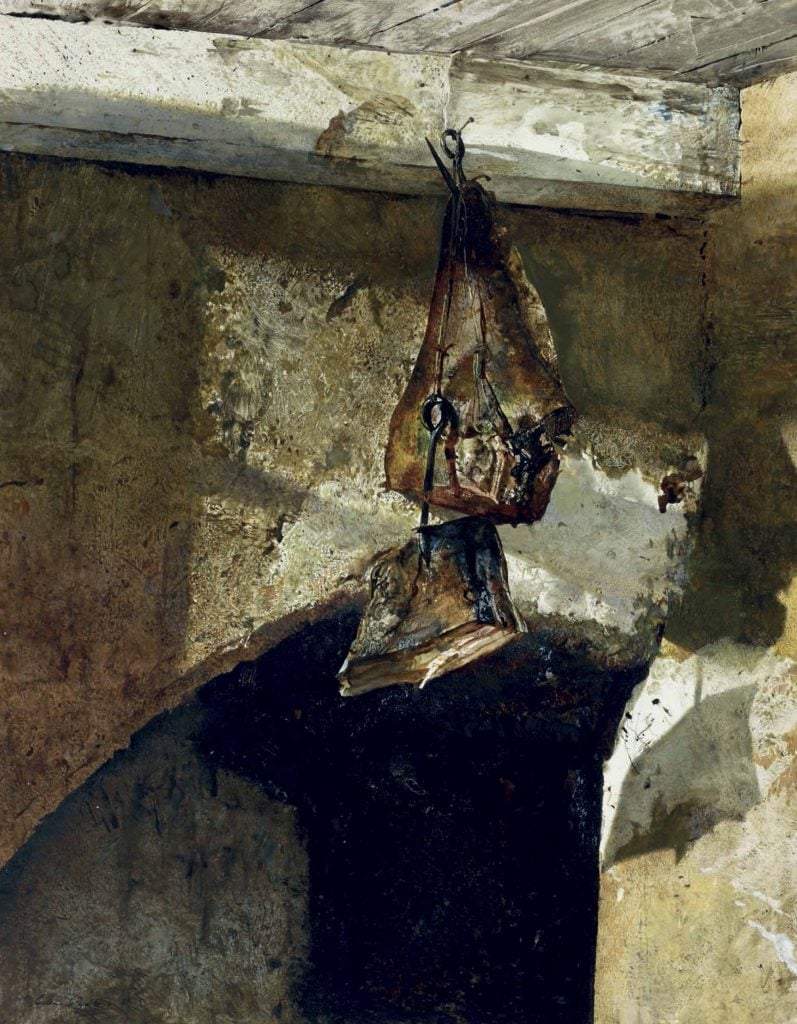
Andrew Wyeth, Below the Kitchen (1960). Courtesy of Clara Xing.
You also have an Andrew Wyeth painting. Can you tell us about that?
The work by Andrew Wyeth was previously in the Rockefeller family collection. I was actually focusing on a painting by his son, Jamie Wyeth. However, I had not seen this work by Wyeth in the previews. When I asked, I found out that due to space constraints, the auction house had hung this work in an inconspicuous corner of the gallery and that the staff had searched for it for a long time before seeing it, and immediately took a photo of it and sent it to me. On the day of the auction, I took the risk of putting up a bid without seeing the original work. But since other collectors probably hadn’t seen it either, I won the bid with almost no competition. Jamie Wyeth’s work, which I did not get, set his auction record. When I finally saw the painting I had purchased, I would describe it as a leap of faith. This work, which Wyeth painted in his signature dry-brush watercolor, has the texture and detail of an oil painting. The way the emotions are expressed through technique, intensity, and color is brilliant. He was one of the few Western painters of the modern era who was devoutly committed to realism as the progenitor of American nostalgia.
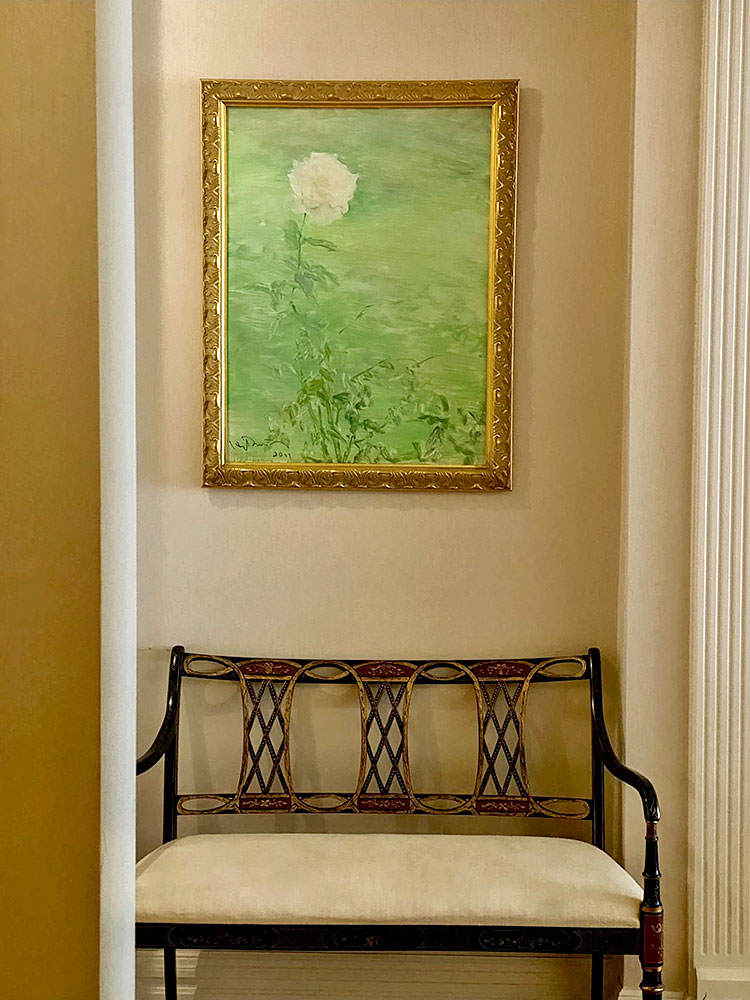
He Duoling, Flower (2019). Courtesy of Clara Xing.
I also have in my collection three oil paintings of flowers and plants from the early phase of He Duoling. His early works were heavily influenced by Wyeth and he created many classic realist works, but in the last ten years or so he began to create works that I personally feel are more impressionistic in style, believing that the technique makes the concept. For these, I deeply admire these artists who do not follow the mainstream trend and focus on painting itself.
What is the most valuable work of art that you own?
I think the most valuable item in my collection is a Qianlong imperial lacquer box. There are only two in existence, and the other is in the National Palace Museum in Beijing. It was also a beloved object of the famous American collectors Florence and Herbert Irving and was prominently displayed in their glass case until they passed away.
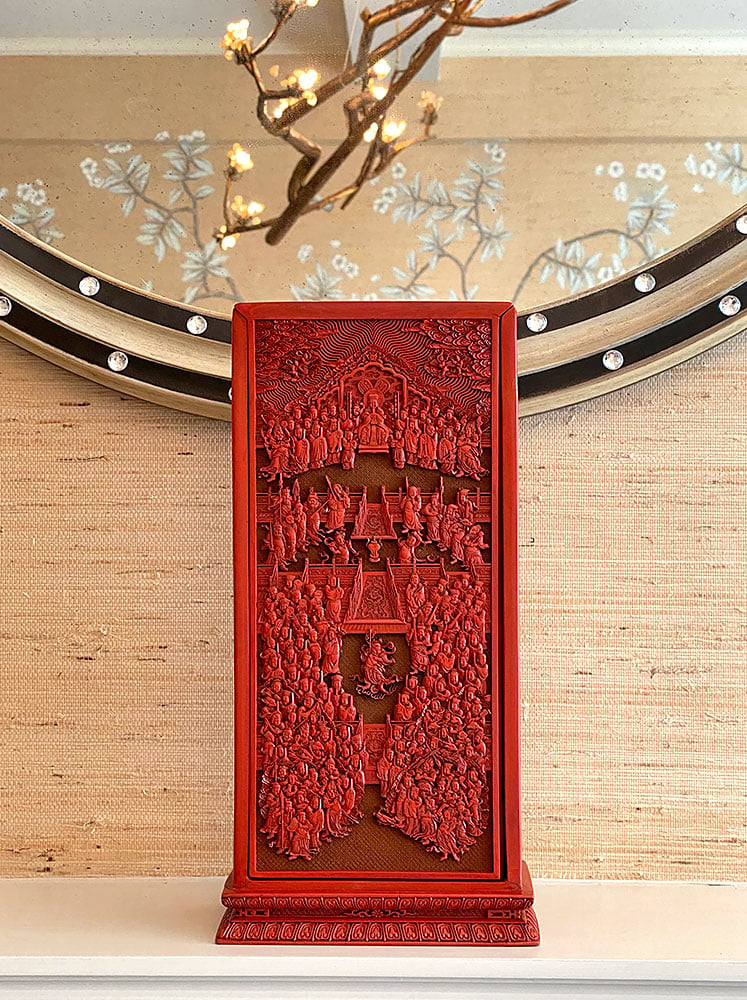
Red lacquer Daoist scripture box from the Qing dynasty, Qianlong period (1736–1795). Courtesy of Clara Xing.
Where do you buy art most frequently?
I purchase Chinese decorative art from auctions, but I buy contemporary art from galleries or dealers.
How do you assess an artifact’s provenance?
I collect a wide range of objects, from bronze and jade to Ming and Qing porcelain and lacquer. I want my home to be a house, not a warehouse, so I have very high expectations for my collection, and each piece in my collection is at least top-notch in some way in its category. I have a scoring system for my collection, with a score of five for perfection in all aspects, and I don’t consider anything below a four. I pay special attention to the provenance, which has almost become a strict limitation for me. Most of the collections on the market are unsourced, and good provenance documentation coupled with a first-class grade is very rare.
I hope that over time, my collection will present representative objects from various dynasties, which is the big picture. On a smaller scale, I hope to form a series on various subjects. For example, animals, flowers, baby play, fairies, and other common themes. It would be interesting to form a comparative collection of the same themes from various dynasties. But I am only a brief custodian of these objects, which carry far greater information than any collector it has passed through.
If you could steal one work of art without getting caught, what would it be?
A Yohen Tenmoku tea bowl, for sure.
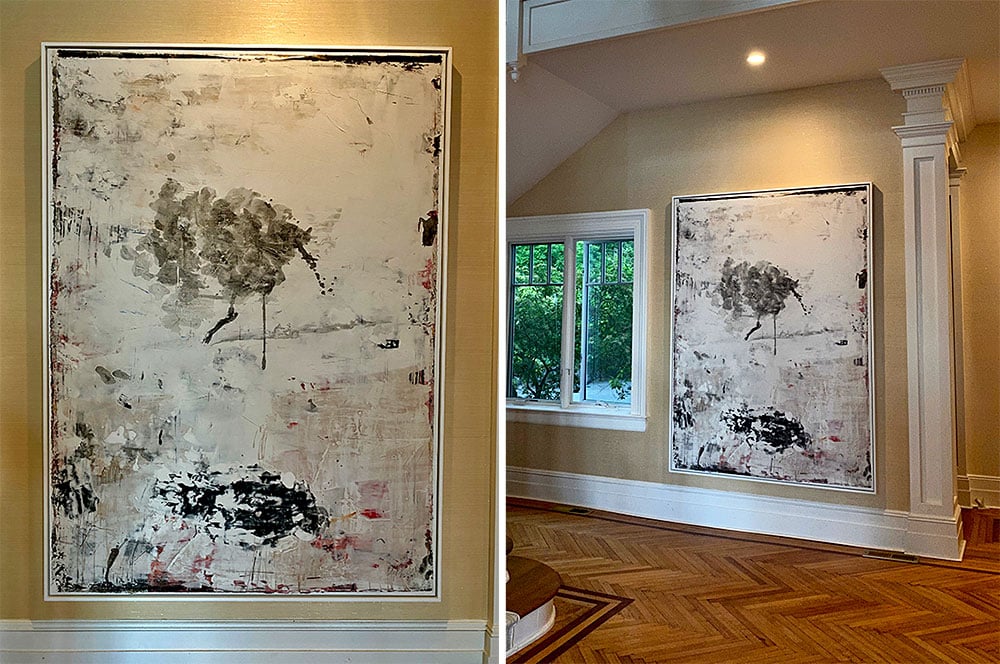
Yan Shanchun, West Lake (2019). Courtesy of Clara Xing.